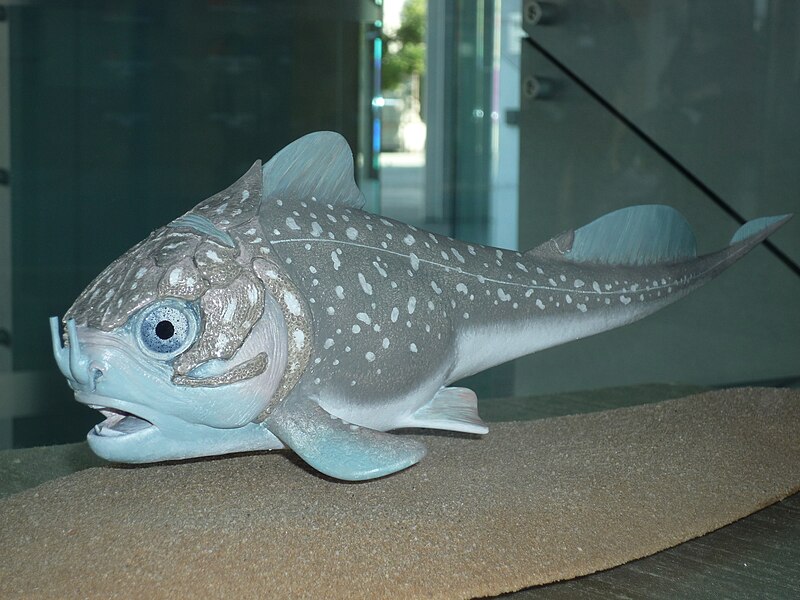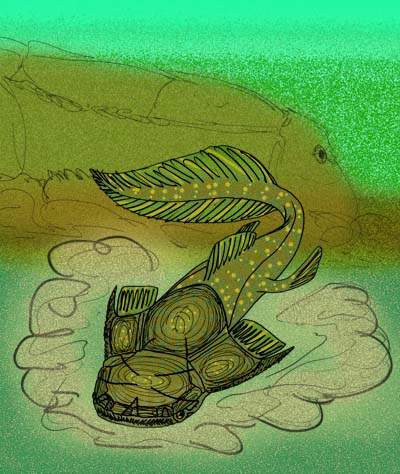Listen to Episode 29 on PodBean, Spotify, YouTube, or wherever you get your podcasts!
In this episode we discuss an interesting and important group of ancient armored fish; Placoderms! We discuss some of their wide variety, their evolutionary significance, and focus a bit on their biggest and most famous member: Dunkleosteus.
In the news
New evidence for a possible link between the Chicxulub asteroid and volcanoes
First tracks of a bipedally running lizard
A new species of slider turtle from the Gray Fossil Site is named after our friend Shawn!
Skates show that the tools for walking on land are very old
Bonus: Humans in North America 100,000+ years ago? The debate continues! [Here‘s a description one of the authors shared on our Facebook page]

Placoderms swam the world’s oceans and freshwater habitats from the Silurian to the end of the Devonian (430-360 mya). They dominated the seas as some of the largest predators of the day, while many also prowled the depths as bottom-dwelling ambush predators. They exhibited a huge variety of body designs and adapted to almost every aquatic environment of that time. Their impressive success ended at the Devonian/Carboniferous extinction event.




Dunkleosteus was one of the largest species of placoderm and also one of the largest predators of the Devonian, growing to the size of modern Great White Sharks (6 m). It’s become famous for its impressive set of jaws that also sported an equally impressive bite. The bite force of a full grown Dunkleosteus is estimated between 4400 N and 7400 N. This is one of the strongest bites among all fish, both living and extinct. It even rivals the modern record holders, the crocodilians.


Placoderms were also incredibly important to the evolutionary history of jawed vertebrates (gnathostomes). If you’d like to learn more, check out the links below:
Some fishy links…
– Earth Touch: The nasty eating habits of prehistory’s meanest fish
– The Conversation: The first vertebrate sexual organs evolved as an extra pair of legs
– LiveScience: Evolution’s Bite: Ancient Armored Fish Was Toothy, Too
– Ecomorphological inferences in early vertebrates: reconstructing Dunkleosteus terrelli (Arthrodira, Placodermi) caudal fin from palaeoecological data(check this one out to see an alternative reconstruction of the tail of Dunkleosteus based on recent research)
—
If you enjoyed this topic and want more like it, check out these related episodes:
We also invite you to follow us on Twitter, Facebook, or Instagram, buy merch at our Zazzle store, join our Discord server, or consider supporting us with a one-time PayPal donation or on Patreon to get bonus recordings and other goodies!
Please feel free to contact us with comments, questions, or topic suggestions, and to rate and review us on iTunes!